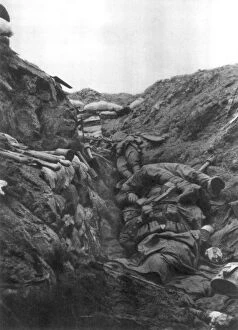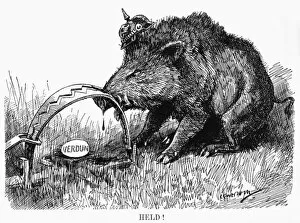Verdun Collection (#5)
"Verdun: The Battle that Shaped History" In the heart of northern France, amidst the ravages of the First World War in 1916
All Professionally Made to Order for Quick Shipping
"Verdun: The Battle that Shaped History" In the heart of northern France, amidst the ravages of the First World War in 1916, a fierce and relentless battle unfolded - Verdun. This historic clash between French and German forces left an indelible mark on both nations and forever altered the course of warfare. From above, an aerial view captured the haunting bombardment of Fort Douaumont, as explosions tore through its walls, leaving behind a scene of devastation. Meanwhile, French artillery shells were meticulously loaded for transport, ready to rain down upon their enemies with unyielding force. On the opposing side, German gunners stood resolute with heavy artillery in hand. Their determination to break through enemy lines was palpable as they prepared for a relentless assault on Verdun's defenses. The German attack during this tumultuous time became synonymous with unimaginable brutality. As troops clashed on the battlefield, lives were lost and landscapes scarred forever. Yet amidst this chaos emerged stories of resilience and courage from those who fought valiantly at Verdun. Verdun itself bore witness to countless horrors throughout WWI but also became known as "The Victor. " It stood tall against all odds and symbolized unwavering strength in times of adversity. Even cartoons depicted this monumental battle's significance; one titled "Reckoning without their host" portrayed nations grappling with unforeseen consequences brought about by war's merciless grip. As winter descended upon these blood-soaked lands in 1917, soldiers braved freezing temperatures while defending their positions along the French front at Verdun. Their unwavering commitment echoed through history as they endured unimaginable hardships for their cause. Years later, remnants of those fallen heroes still found solace within temporary ossuaries - silent reminders of sacrifice made in pursuit of victory at any cost.
















































